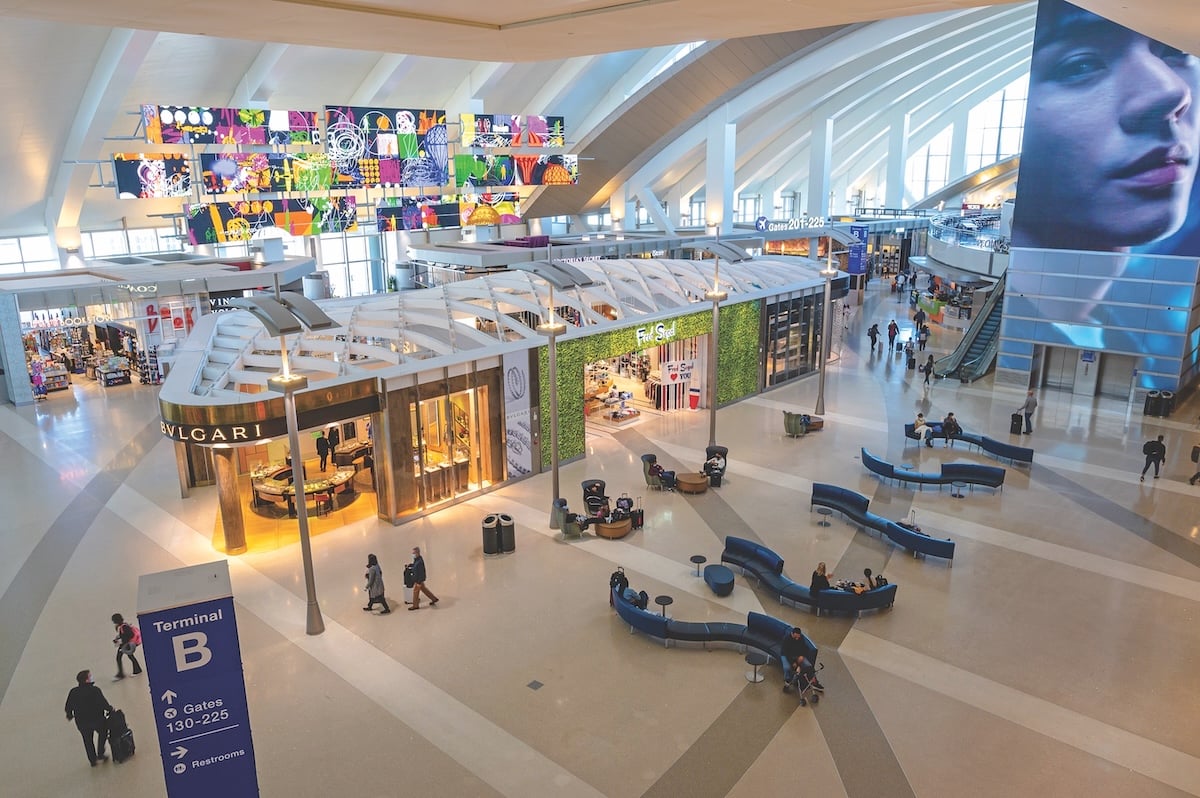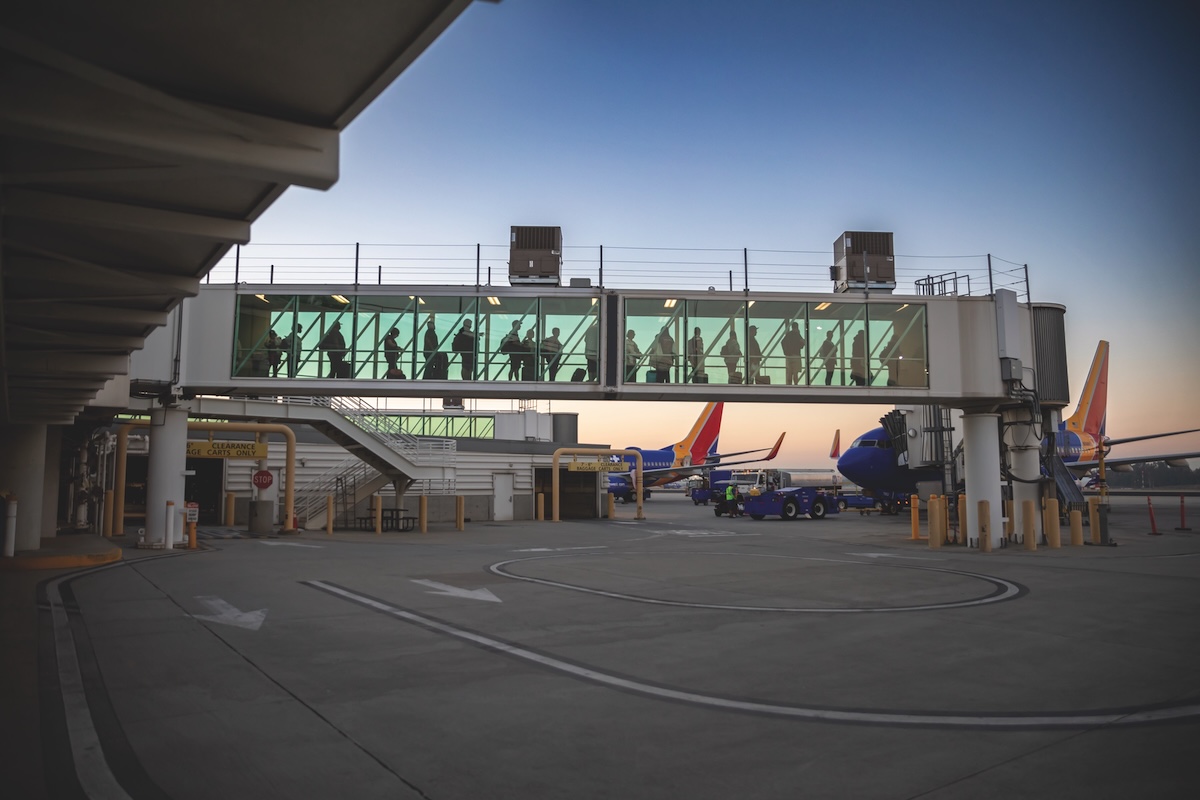Three of the four airports serving Los Angeles County – Los Angeles International, Hollywood Burbank and Long Beach – reported drops in passengers in August compared to same month last year.
Only Ontario International bucked the trend – just barely – with a gain of 0.5%.
Overall, passenger counts at the four airports dropped nearly 4% in August to 8.22 million. Cargo tonnage also fell more than 6% in August due mostly to a drop in cargo handled at LAX.
These are the topline results from an analysis of August passenger and cargo data from the four airports.
On the passenger front, the airports fared worse than the nation as a whole. Domestic passenger traffic in the United States in August rose 3.3% compared to the same month last year, according to McLean, Virginia-based Flight Business Intelligence, which provides data products and services to the aviation industry.
“From August 2024 to August 2025, more major U.S. airports experienced increases in domestic traffic than declines. John F. Kennedy International Airport (JFK) and Las Vegas led with growth of 15.4% and 8.6%, respectively, while Boston and Denver posted declines of 2.7% and 1.9%,” the Flight Business Intelligence report said.
The year-over-year drop in passengers at Long Beach Airport improved somewhat to less than 8% in August from plunges of 10.5% for each of the two previous months. But that drop in passengers was still the worst performance of the four airports serving the county.
Cynthia Guidry, director of the city-owned airport, attributed the decline to several factors: declining numbers of tourists to the Los Angeles metro region, reduced airline schedules, economic pressures and rising costs.
Another factor somewhat unique to Long Beach: Dallas-based Southwest Airlines Co. is the dominant carrier at the airport, with nearly 90% of the flights and passengers. Southwest has dealt with its own issues over the past year, including shortages of planes and customer dissatisfaction with the new policy of charging for checked baggage.
Meanwhile, LAX remained mired in a prolonged slump in passenger counts in August. Domestic passenger traffic was down 5% in August compared to the same month last year, while international passenger counts were down about 2%.
While most major airports in the U.S. and around the world have rebounded from pandemic-induced shutdowns, LAX is moving in the opposite direction. The tally of 8.2 million passengers that went through airport gates in August was down nearly 18% from pre-pandemic August 2019. That’s the worst reading since March 2023, when passenger tallies were 19% below pre-pandemic levels yet were on an upward trend.
In an interview in the Los Angeles Times last month, John Ackerman, chief executive of Los Angeles World Airports, acknowledged that LAX is lagging its peers, both in the United States and around the world. This despite his setting up in the summer of last year a division with the explicit mission of turning this situation around.
Still, Ackerman told the Times that the passenger shortfall has had a silver lining: speedier construction and renovation.
“I’d rather have heavy traffic and have to rebuild the airport at the same time, but if the traffic’s down, that can allow us to revise the airport quicker than we would have than if … the airport was full,” he said.
 The Tom Bradley Terminal Main Hall at Los Angeles International Airport. (Photo c/o LAX)
The Tom Bradley Terminal Main Hall at Los Angeles International Airport. (Photo c/o LAX)
Meanwhile, at Hollywood Burbank Airport, Houston-based Avelo Airlines has been winding down operations faster than the end-of-year deadline given when initially announced in July. That budget airline carried roughly half of the passengers in August compared to the same month last year.
Dania Beach, Florida-based Spirit Airlines reported a similar percentage drop in passengers. That airline has been cutting routes as it filed for Chapter 11 bankruptcy protection on Aug. 29 for the second time in less than a year.
Relief is set to arrive at the Burbank airport with announcements of several new flights each from Denver-based Frontier Airlines, Las Vegas-based Allegiant Travel Co. and Salt Lake City-based Breeze Aviation Group Inc. But those flights aren’t set to begin until the first quarter of next year.
In the meantime, October passenger counts at Hollywood Burbank Airport could take a hit from the shortage of air traffic controllers at the airport, as a result of the U.S. government shutdown. During the afternoon and evening of Oct. 6, there were no controllers in the tower at the airport, which resulted in numerous flight delays and cancellations.
Ontario International was the only local airport to report a year-over-year gain in passengers in August, though at 0.5% to nearly 647,000.
However, that was still enough to allow the airport to post its 54th consecutive month of year-over-year passenger gains – that’s 4.5 years without a year-over-year drop in monthly passenger counts.
Seattle-based Alaska Airlines Group was the biggest percentage gainer, jumping 33% to nearly 64,000. That was offset by Frontier Airlines, where the passenger tally fell 35% to 69,000.
Overall, air cargo handled at the four airports in August totaled nearly 262,000 metric tons, down more than 6% from the same month last year. Two of the airports – LAX and Ontario – handle 98% of this air cargo total, and they have been moving in opposite directions for months now.
LAX, which by far handles the most air cargo, saw its tonnage fall nearly 9% to just under 189,000 tons. Ontario’s tonnage eked out a slight 0.9% gain to 69,000 metric tons.
The drop in cargo handled at LAX may reflect the ongoing global trade war as the U.S. imposed sanctions on most of its trading partners and many of those countries retaliated.
At Ontario, the rise is due to a historic surge in air mail. Earlier this year, Atlanta-based United Parcel Service won a huge contract from the United States Postal Service to handle air mail at its recently expanded facilities at Ontario. This has led to year-over-year air mail cargo surges topping 200% – until this month, when that surge was “only” 116%. But that was still enough to offset an 8% drop in air freight tonnage handled at the airport.

